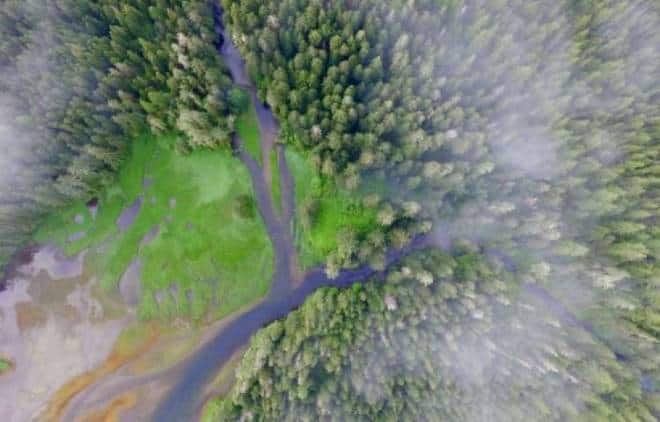Ottawa: British Columbia’s coastal First Nations (aboriginals) have for the past 13,000 years enhanced the productivity of the rainforest instead of deteriorating it through repeated occupation, a new study has found.
The researchers examined 15 former habitation sites in the Hakai Lúxvbálís Conservancy on Calvert and Hecate Islands, where First Nations’ have lived for millennia.
The study published in the journal Nature Communications, incorporated research which used remote-sensed, ecological and archaeological methods to compare forest productivity with a focus on Western Red Cedar.
Due to shell middens – places where the debris from eating shellfish and other food has accumulated over time – and fire, the trees growing at former habitation sites are taller, wider and healthier than those in the surrounding forests, research shows.
“These forests are thriving from the relationship with coastal First Nations. For more than 13,000 years — 500 generations — people have been transforming this landscape. So this area that at first glance seems pristine and wild is actually highly modified and enhanced as a result of human behaviour,” said Andrew Trant, Professor, Faculty of Environment, at the University of Waterloo, Ontario.
Fishing of intertidal shellfish intensified in the area over the past 6,000 years, resulting in the accumulation of deep shell middens, in some cases more than five meters deep and covering thousands of square meters of forest area.
The long-term practice of harvesting shellfish and depositing remnants inland has contributed significant marine-derived nutrients to the soil as shells break down slowly, releasing calcium over time, the study mentioned.
The research found that this disposal and stockpiling of shells, as well as the people’s use of fire, altered the forest through increased soil pH and important nutrients, and also improved soil drainage.
“These results alter the way we think about time and environmental impact. Future research will involve studying more of these human-modified landscapes to understand the extent of these unexpected changes,” Trant added.
IANS

